BlitzWolf Dual port QC3 usb charger BW-S6
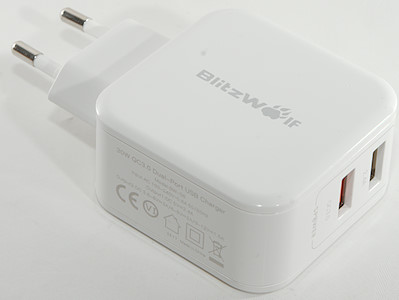
Official specifications:
- Brand: BlitzWolf®
- Model: BW-S6
- USB Port: 18W(Max) QC3.0 Port + 12W(Max) 2.4A Port
- Total Power: 30W (Max)
- Input: AC 100-240V~50/60Hz 1A
- Output: 2.4A Port: 5V/2.4A (Max)
- QC3.0 Port: 3.6-6.5V/2.4A 6.5-9V/2A 9-12V/1.5A (Max)
- Size: 54X 54X28.5 mm / 2.10 X 2.10 X 1.1 inch
- Color: White
- Weight: 100g±10g
- Fast Charging: Compatible with Qualcomm QC2.0,QC3.0,HUAWEI FCP,Samsung AFC,Apple,BC1.2
I got it from Banggood
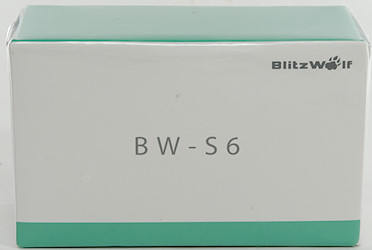
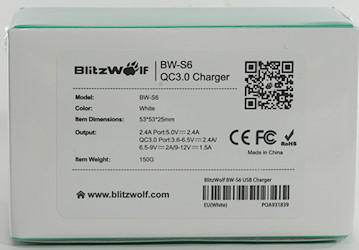
Blitzwolf uses a new card board box with some specifications on.
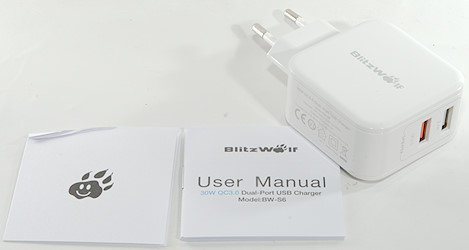
The box contained the charger, instruction sheet and a note.


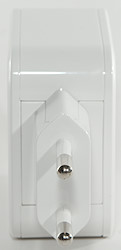
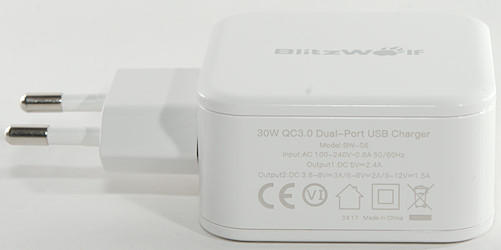
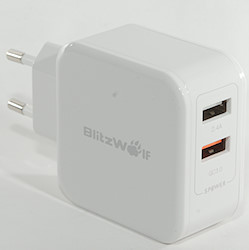
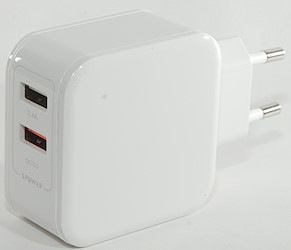
Measurements
- Power consumption when idle is 0.15 watt 230VAC
- Lowest QC3 voltage is 3.47V
- QC output is QC and auto coded with up to Apple 2.4A
- The two usb outputs shared the ground/minus connection, but the plus is completely independent.
- I detected Samsung-AFC and Huwai FCP support.
- 2.4A output is auto coded with up to Apple 2.4A
- The charger has a blue led inside, that is shining out through the usb connectors.
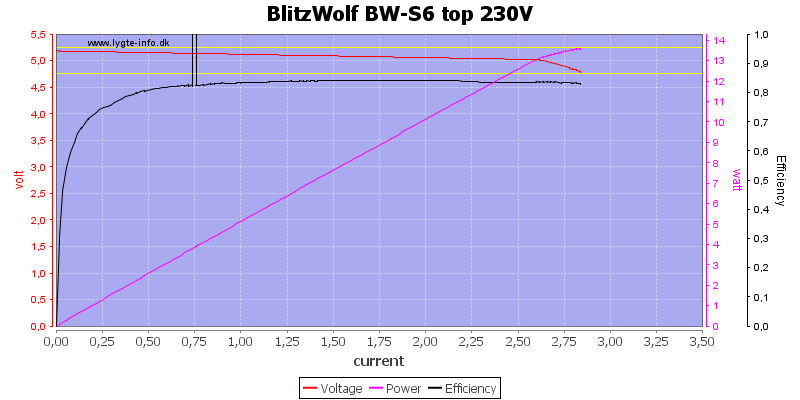
The charger can deliver about 2.8A on the normal usb output before the overload protection kicks in, this is fine for a 2.4A charger.
The spike on the efficiency curve is due to my generator and the spikes the charger draws current in.
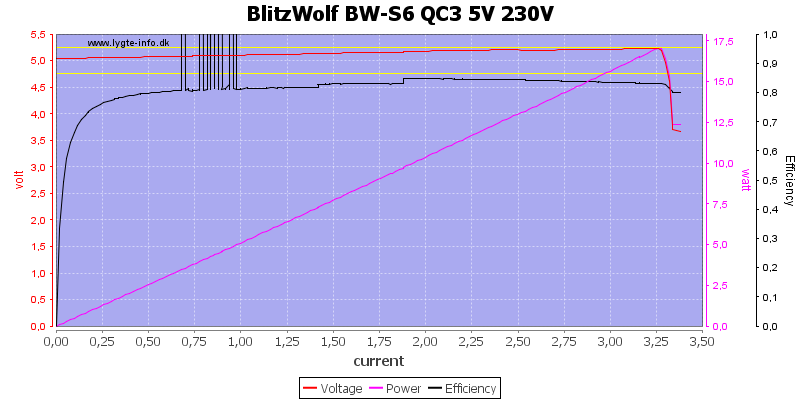
The QC output will increase voltage with load and can deliver about 3.2A before the overload protection kicks in.
Again the spikes on the efficiency curve is due to my generator.
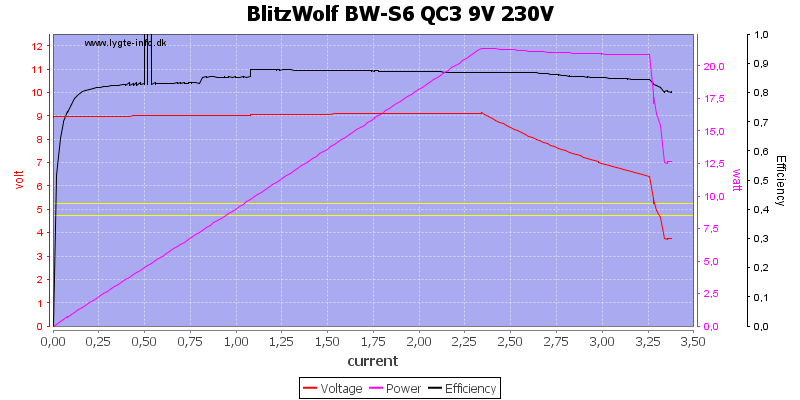
At 9V the output the charger can deliver 2.3A before the voltage starts to drop.
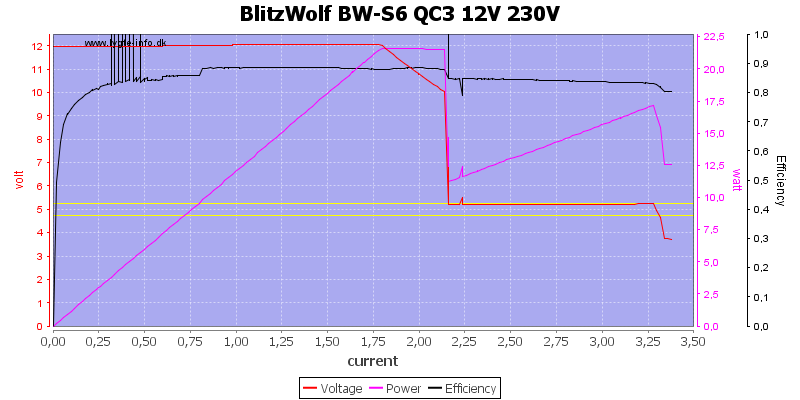
At 12V the current is "only" about 1.8A, at 2.1A it will drop out of QC mode and switch to 5V.
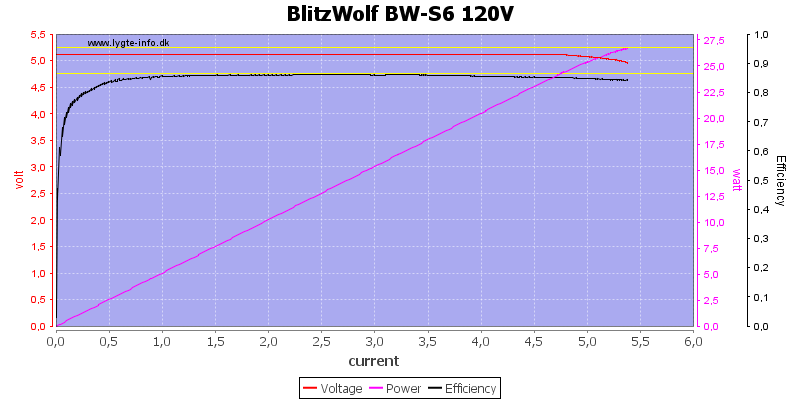
Running both outputs at 5V I cold draw a total current of 5.4A. This test was done with two loads that draw the same about of current, if I had let the QC deliver slightly more of the current, I could probably have draw a bit more.
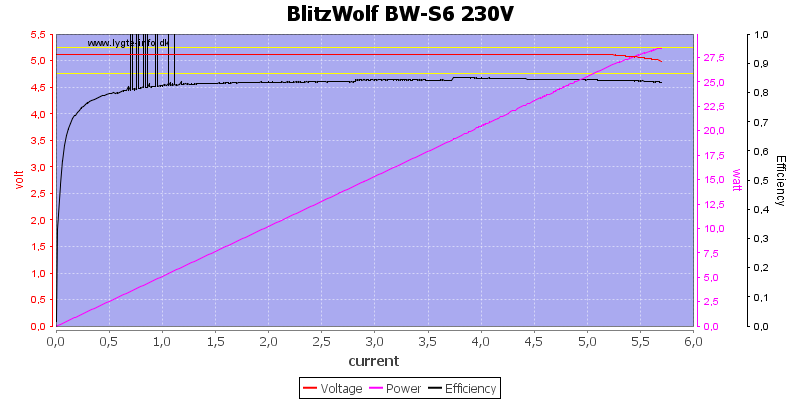
The current limit is slightly higher at 230VAC.
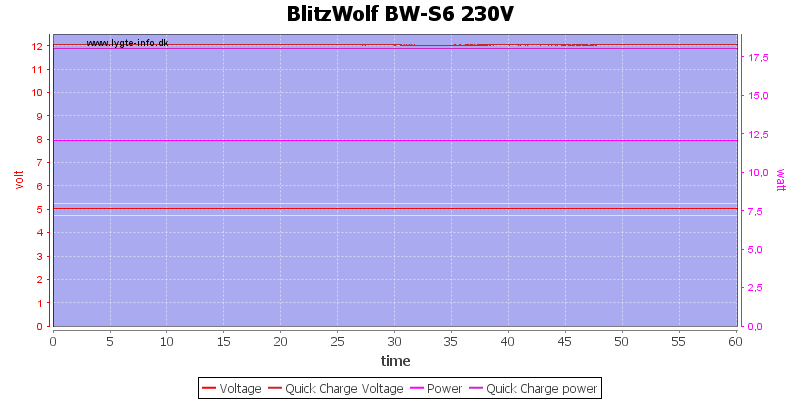
Loading both QC and 2.4A output with rated power for 1 hour works fine.
The temperature photos below are taken between 30 minutes and 60 minutes into the one hour test.
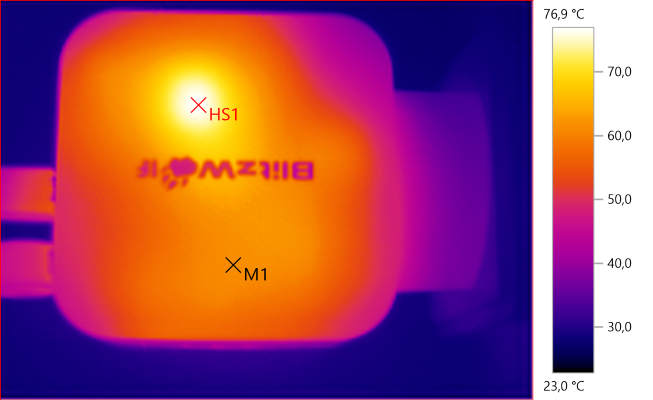
M1: 61,5°C, HS1: 76,9°C
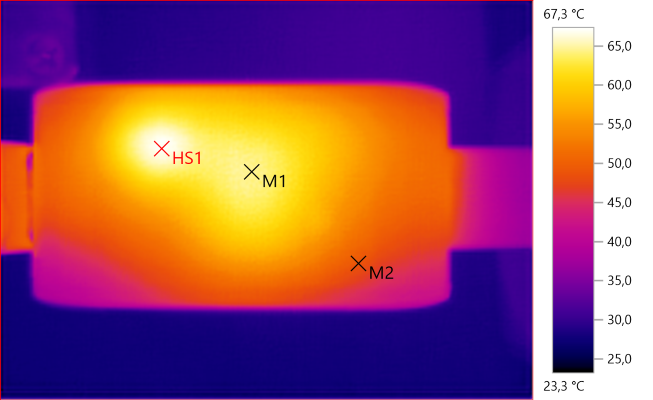
M1: 64,5°C, M2: 48,8°C, HS1: 67,3°C
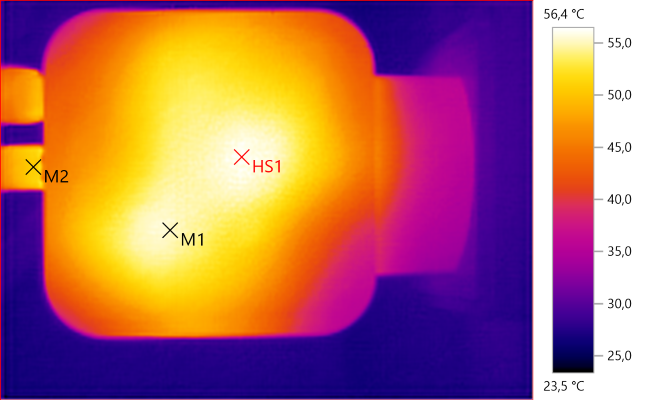
M1: 55,3°C, M2: 50,8°C, HS1: 56,4°C
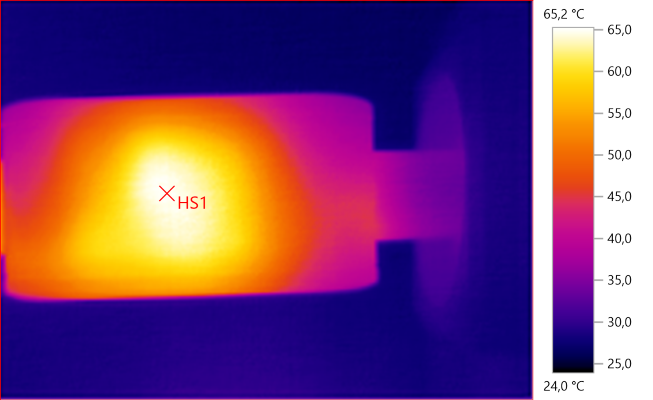
HS1: 65,2°C

M1: 50,7°C, HS1: 75,1°C

At 0.5A the noise is 15mV rms and 282mVpp

At 1A the noise is 52mV rms and 542mVpp

At 2.5A the noise is 24mV rms and 410mVpp
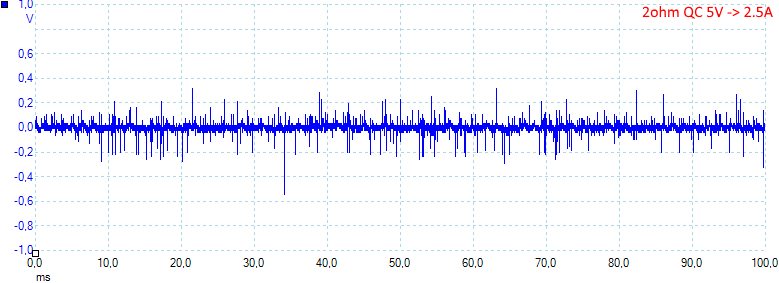
At 5V and 2.5A on QuickCharge the noise is 39mV rms and 719mVpp
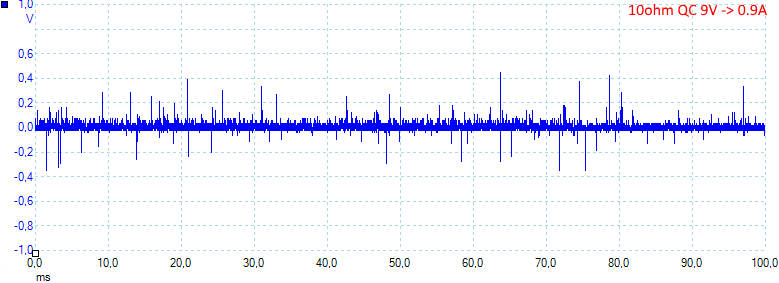
At 9V and 0.9A on QuickCharge the noise is 36mV rms and 961mVpp
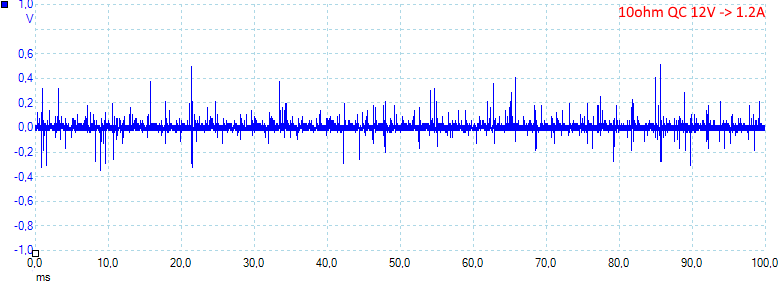
At 12V and 1.2A on QuickCharge the noise is 94mV rms and 1032mVpp
Tear down

I applied some pressure with my vice, then I could break the lid open.
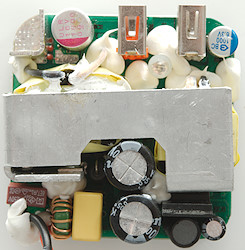
It is a very compact construction, because it is basically two nearly independent usb power supplies. At the input they are sharing the fuse, common mode coil, the capacitors and the two inductors between the rectifier and capacitors. There is only a switching transistor for the normal usb output and it do not use the heatsink. In fact nothing is mounted on the heatsink, the purpose may be to distribute the heat from the transformers to the box.
On the output side is a led between the two usb connectors and a small heatsink next to the 16V capacitor.
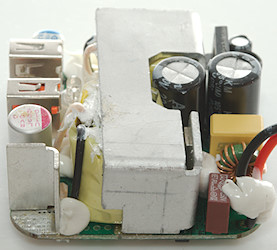
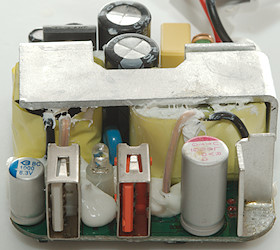
On this image the safety capacitor can be seen, it is mounted between the two transformers.

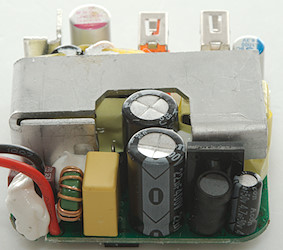
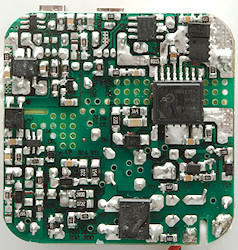
There is a lot of stuff on this side. At the input is the bridge rectifier (DB1: DB207S). The normal usb switcher (U4) with opto feedback. The QC part uses a INN2215K chip with everything inside, except the synchronous rectifier and the QC3 controller (U2: IP2163), this chip can handle a lot of charge protocols.
The normal 5V output has a synchronous rectifier chip and a auto code chip (U5) below the usb connectors. There is also a 431 reference chip.

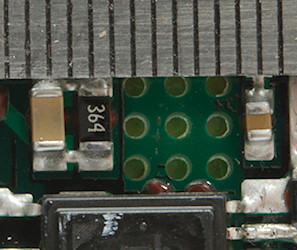
The isolation distance is enough.
Testing with 2830 volt and 4242 volt between mains and low volt side, did not show any safety problems.
Conclusion
The charger is basically two independent chargers in one box, one with Quick Charge and one normal.
With fairly advanced auto coding, lots of current and good safety, it is a good usb charger.
Notes
The usb charger was supplied by Banggood for a review.
Read more about how I test USB power supplies/charger




































